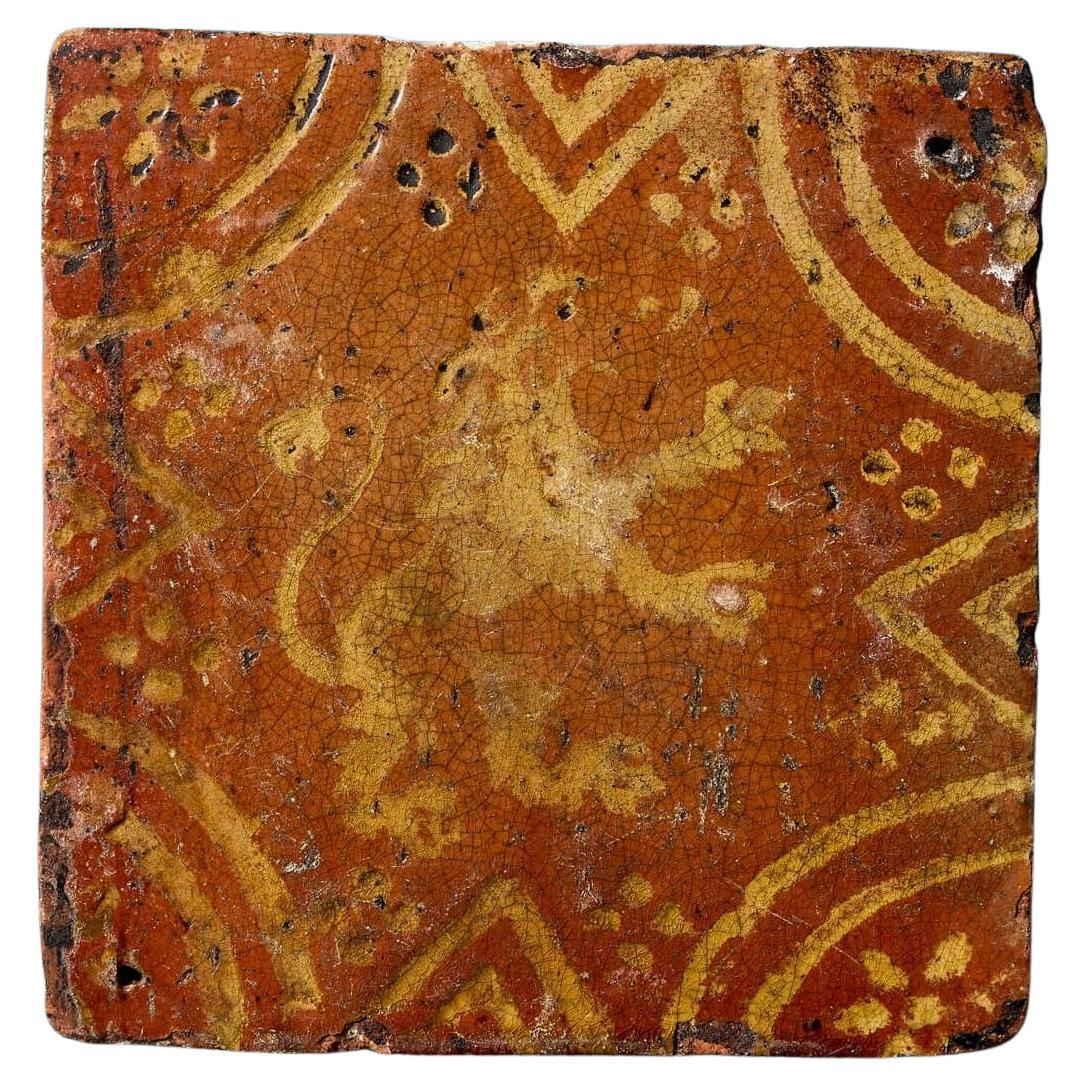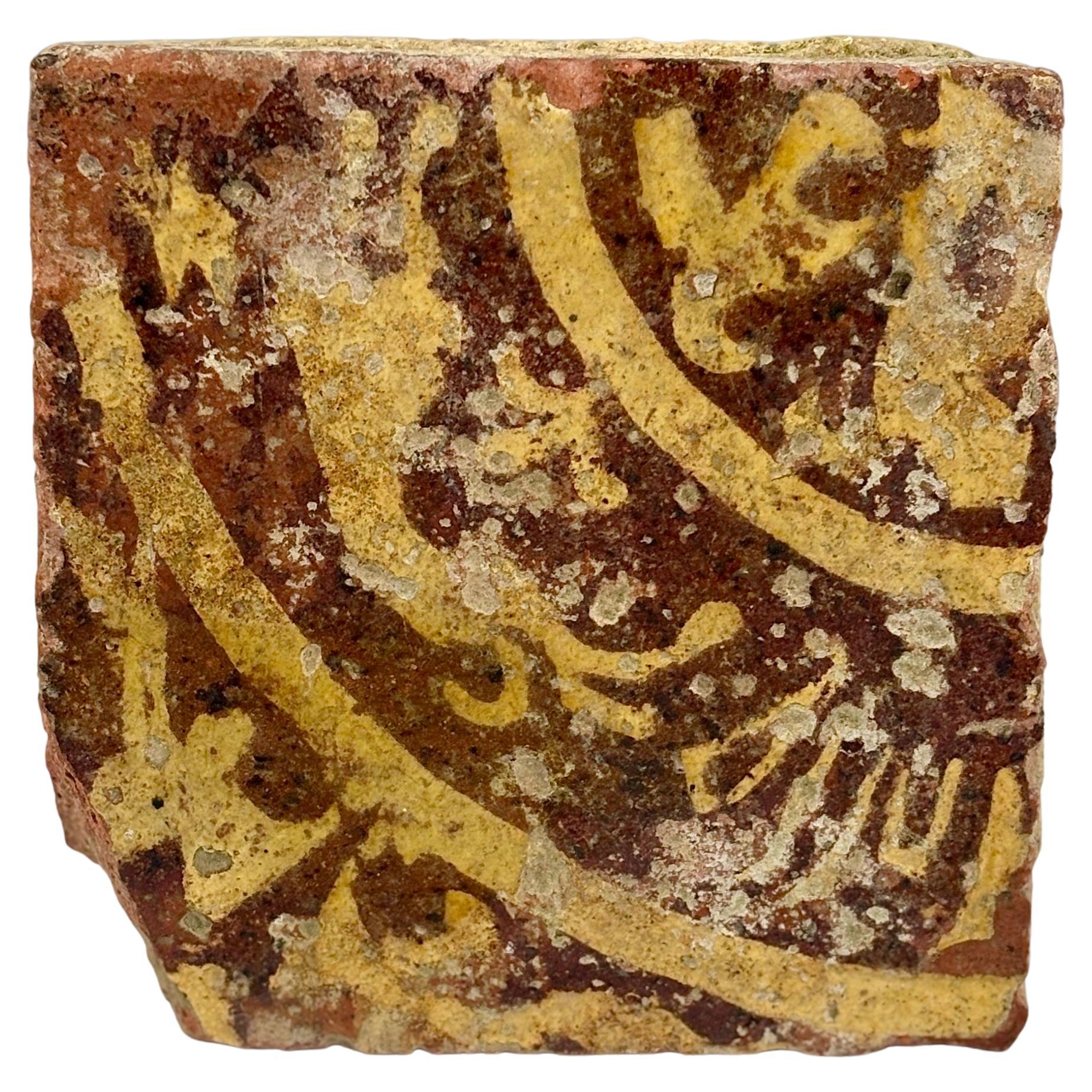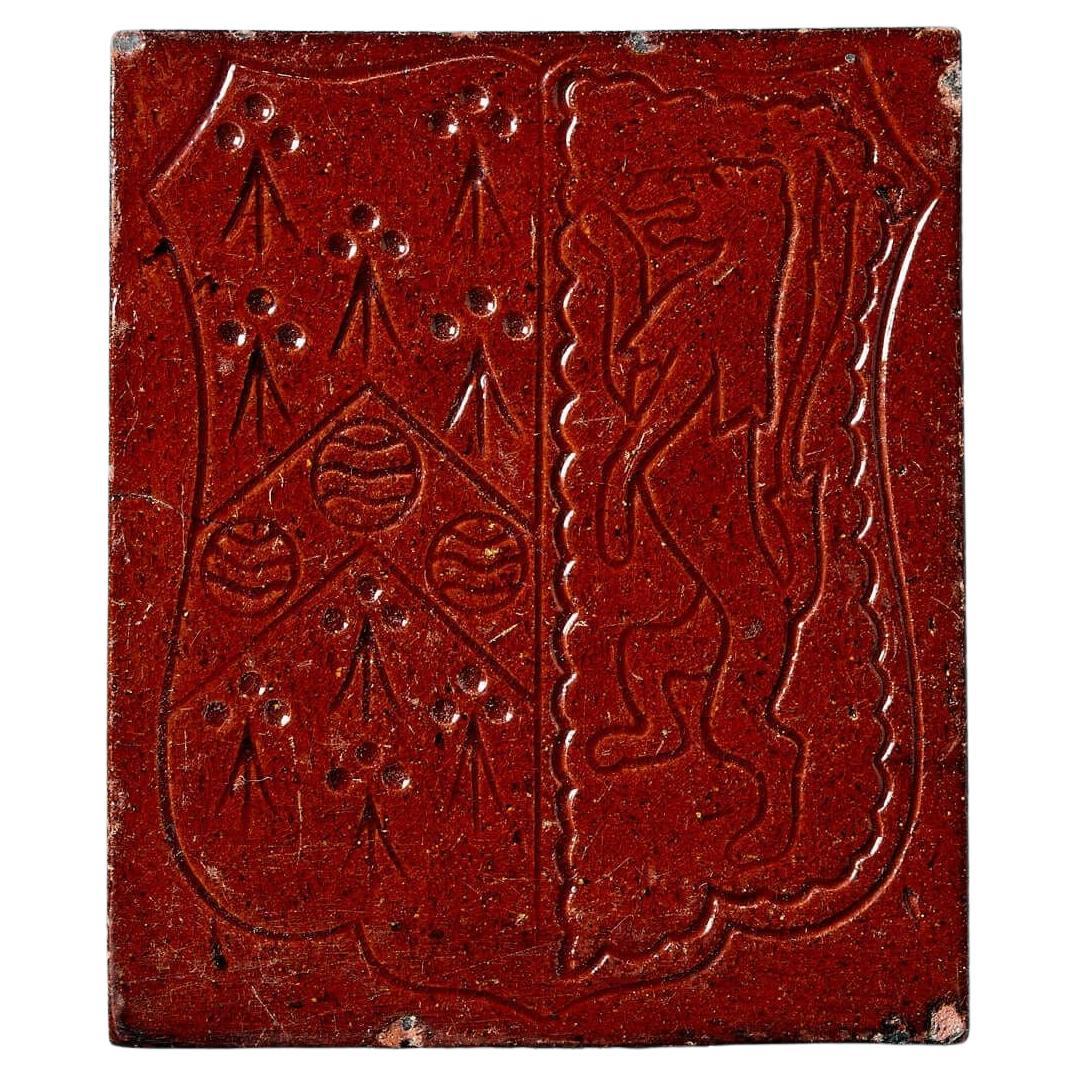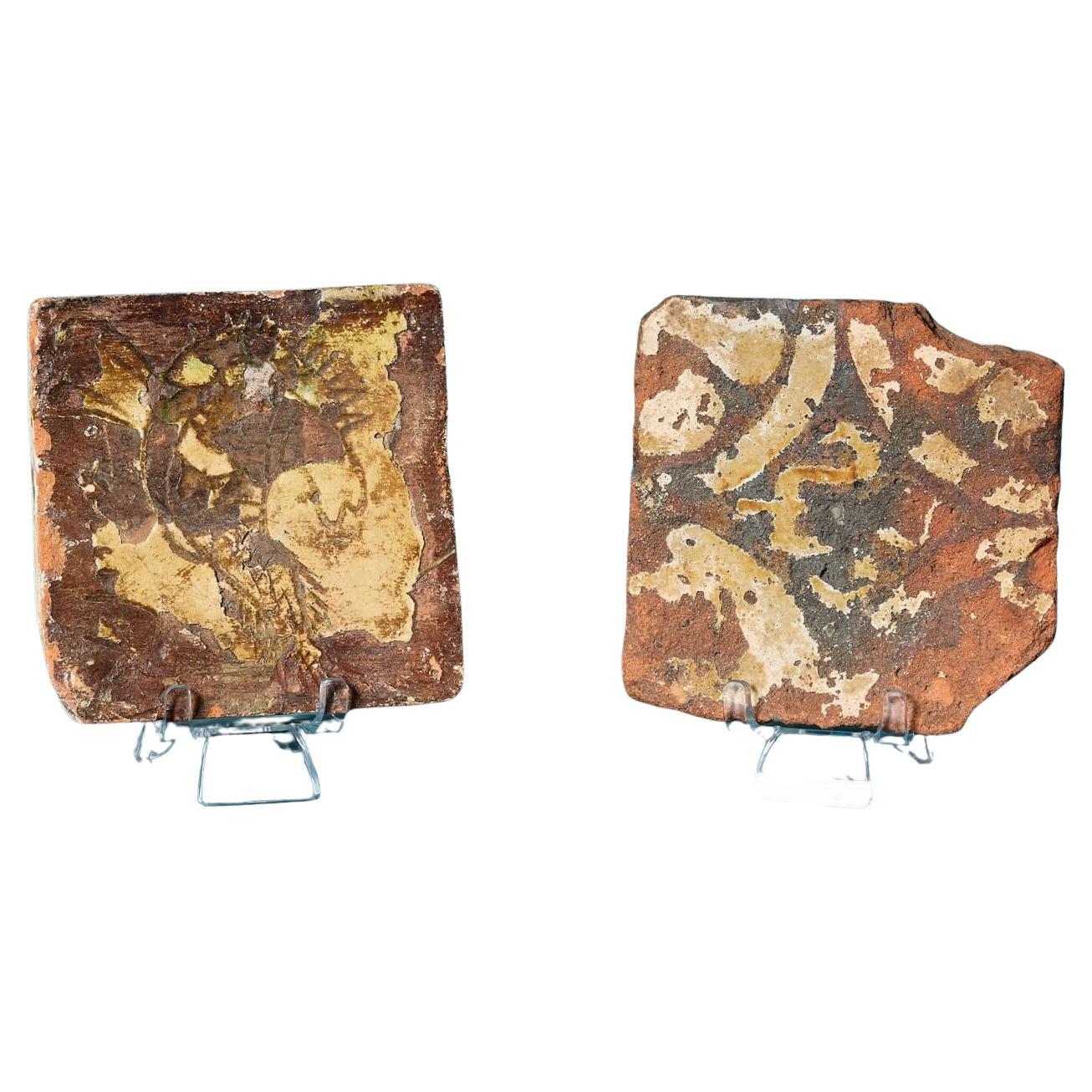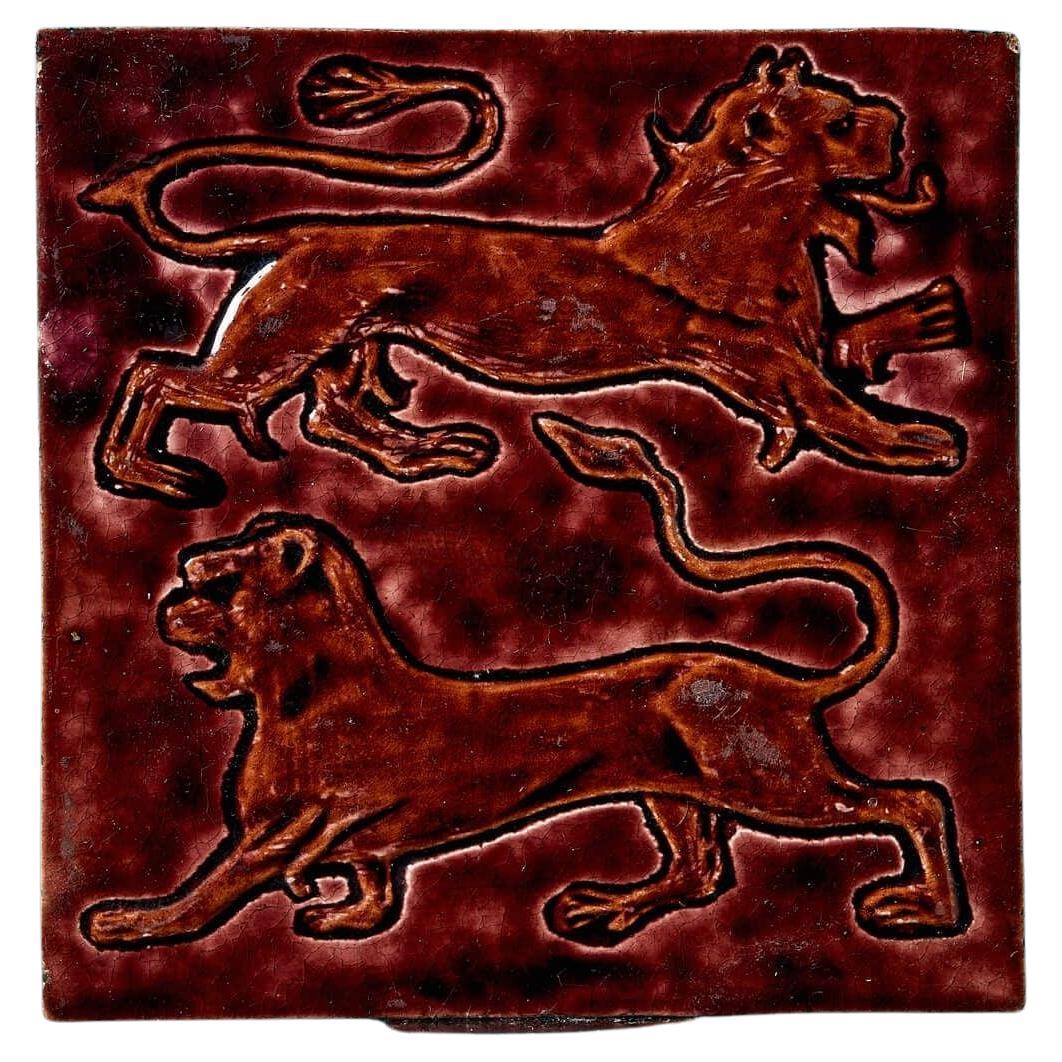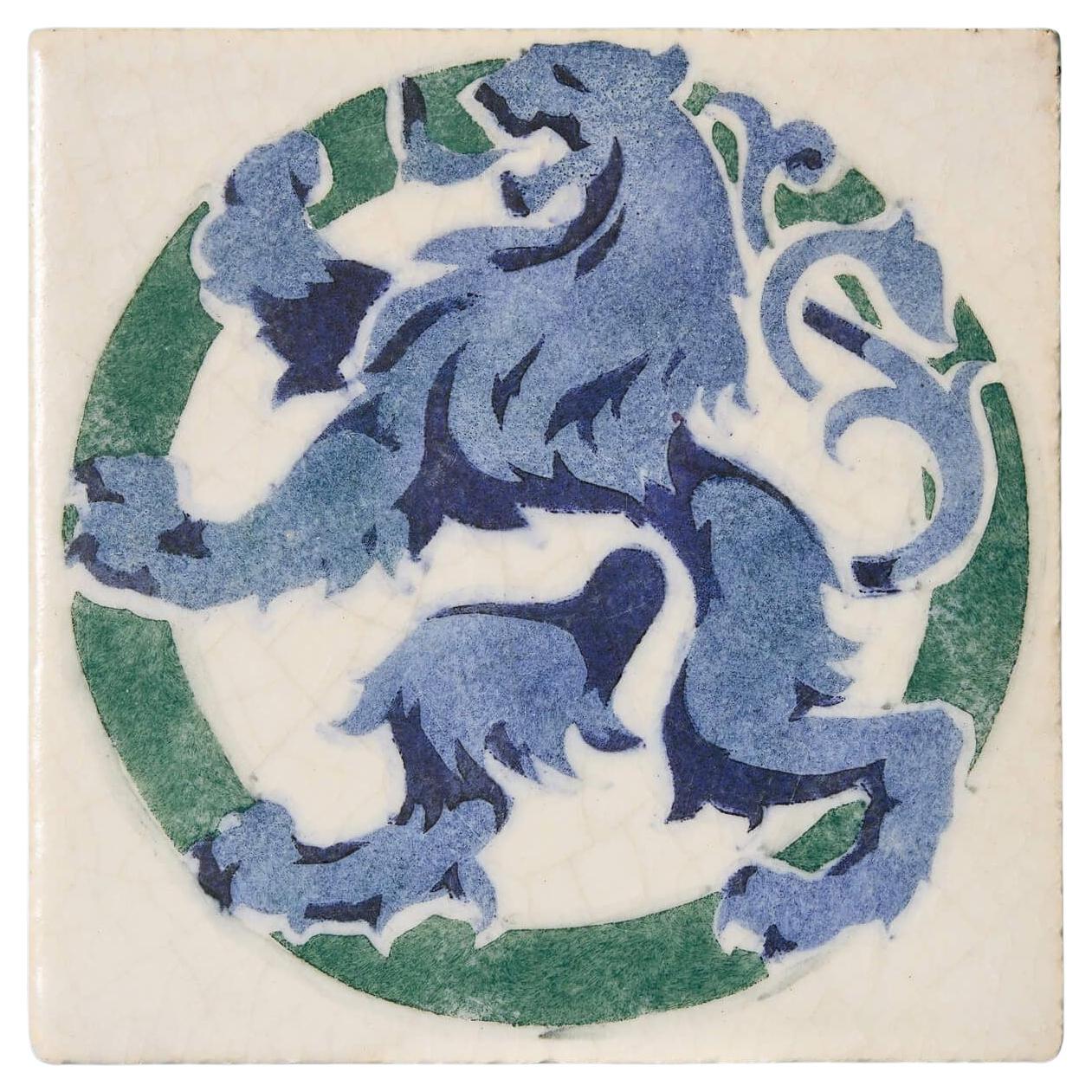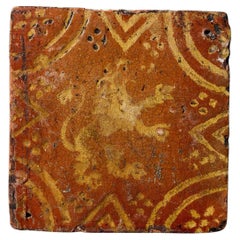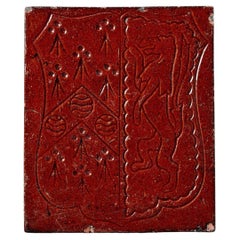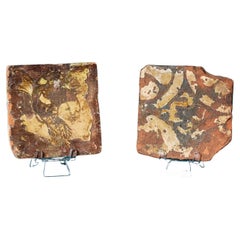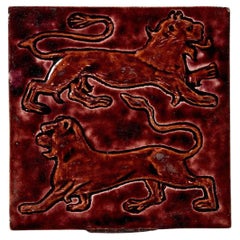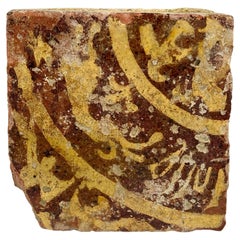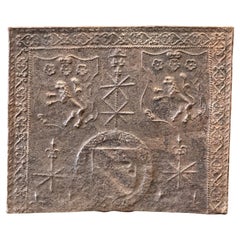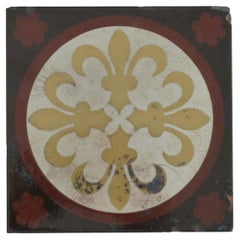Items Similar to 16th Century Late Medieval Heraldic Encaustic Tile
Want more images or videos?
Request additional images or videos from the seller
1 of 5
16th Century Late Medieval Heraldic Encaustic Tile
$1,174.08
£875
€1,012.22
CA$1,650
A$1,794.41
CHF 945.34
MX$21,793.47
NOK 11,884.78
SEK 11,141.03
DKK 7,599.49
About the Item
A 445-year-old late medieval 16th century heraldic encaustic tile of Flemish origin (unmarked). Made from terracotta and glazed, this 6-inch antique tile is an excellent collector’s piece, dating from circa 1580 when Philip the II of Spain was rule of Flanders, while Elizabeth I was Queen of England.
One of two similar we are selling, this heraldic tile is decorated with a rampant lion, facing left, surrounded by a border of lines, arches and dots resembling flowers.
A true antique that has stood the test of time for more than 4 centuries, slight wear only adding to its ancient beauty.
- Dimensions:Height: 5.71 in (14.5 cm)Width: 5.71 in (14.5 cm)Depth: 0.52 in (1.3 cm)
- Style:Medieval (Of the Period)
- Materials and Techniques:Terracotta,Glazed
- Place of Origin:
- Period:
- Date of Manufacture:1580
- Condition:Good structural condition. Surface wear. Chips and losses. Wear to glaze. Traces of mortar to sides and backs. No signs of repair.
- Seller Location:Wormelow, GB
- Reference Number:Seller: 367361stDibs: LU2096345403162
About the Seller
4.9
Platinum Seller
Premium sellers with a 4.7+ rating and 24-hour response times
Established in 2006
1stDibs seller since 2016
738 sales on 1stDibs
Typical response time: 5 hours
- ShippingRetrieving quote...Shipping from: Wormelow, United Kingdom
- Return Policy
Authenticity Guarantee
In the unlikely event there’s an issue with an item’s authenticity, contact us within 1 year for a full refund. DetailsMoney-Back Guarantee
If your item is not as described, is damaged in transit, or does not arrive, contact us within 7 days for a full refund. Details24-Hour Cancellation
You have a 24-hour grace period in which to reconsider your purchase, with no questions asked.Vetted Professional Sellers
Our world-class sellers must adhere to strict standards for service and quality, maintaining the integrity of our listings.Price-Match Guarantee
If you find that a seller listed the same item for a lower price elsewhere, we’ll match it.Trusted Global Delivery
Our best-in-class carrier network provides specialized shipping options worldwide, including custom delivery.More From This Seller
View All16th Century Late Medieval Encaustic Tile with Rampant Lion
Located in Wormelow, Herefordshire
A 445-year-old late medieval 16th century encaustic tile of Flemish origin (unmarked), detailed with a rampant lion. Made from terracotta and glazed, this 6-inch antique tile is an e...
Category
Antique 16th Century Dutch Medieval Mounted Objects
Materials
Terracotta
Maw & Co. Antique English Glazed Clay Tile with Armorial Crest
Located in Wormelow, Herefordshire
An antique English glazed clay tile by Maw & Co. (stamped) with an armorial crest depicting the Coat of Arms of the Earls of Brownlow and Bridgewater, thought to date from around 186...
Category
Antique Mid-19th Century English Victorian Mounted Objects
Materials
Clay
Pair of Antique English Encaustic Medieval Tiles c.1400
Located in Wormelow, Herefordshire
A pair of antique English encaustic medieval tiles, sourced from a private collection, Oxfordshire, dating to the 14-15th century.
The set com...
Category
Antique 15th Century and Earlier English Medieval Mounted Objects
Materials
Clay
William De Morgan Antique Heraldic Lion Tile
By William De Morgan
Located in Wormelow, Herefordshire
A 6 and ¼ inch antique heraldic lion tile designed by William De Morgan, impressed to the reverse with the rose mark of Sands End Pottery, Fulham.
Dating fr...
Category
Antique Late 19th Century English Victorian Mounted Objects
Materials
Clay
Reclaimed Carter & Co Tile of Heraldic Lion
Located in Wormelow, Herefordshire
A reclaimed Carter & Co of Poole Pottery tile featuring a stylised heraldic lion rampant.
Although this tile is unmarked, a similar example is on display in the collection of the Cleveland Museum of Art, Ohio, and was purchased from Carter & Co in 1926.
Detailing a hand painted stylised blue lion within a green wreath before an off-white background, this 5 inch collectors tile is a stunning decorative interior piece for display or part of a collector’s cabinet.
Carter & Co
Carter Tiles, later Carter & Co, was founded in 1873 by Jesse Carter, a builder’s merchant and ironmonger from Surrey, who bought James Walker’s brick and tile business on the East Quay at Poole.
By the 1880’s Carters...
Category
Early 20th Century English Mounted Objects
Materials
Clay
Chamberlain & Co Fleur de Lys Encaustic Tile
Located in Wormelow, Herefordshire
An antique French medieval style encaustic tile by Chamberlain and Co of Worcester.
This 6-inch glazed tile is a striking decorative interior piece or a welcome addition to an encau...
Category
Antique Mid-19th Century English Medieval Mounted Objects
Materials
Clay
You May Also Like
14th Century Medieval Encaustic Slip Glazed Floor Tile
Located in Pease pottage, West Sussex
Encaustic Medieval Floor Tile, with impressed and inlaid slip filled decoration.
14th Century, wear and condition commensurate with age, minor loss to one corner.
Category
Antique 15th Century and Earlier French Medieval Flooring
Materials
Stoneware
Antique Relief Tile Panel in the Style of J. Parentani, 1890
By Sarreguemines
Located in Rijssen, NL
Stunning Art Nouveau/ Arts & Crafts tile panel from the superb firm, Craven Dunnill, & Co., Ltd, Jackfield Salop, England, circa 1905, in a bright celadon. This quantity original jug...
Category
Antique 1890s French Medieval Architectural Elements
Materials
Earthenware, Pottery
16th Century Gothic Period Fireback / Backsplash with Unknown Coat of Arms
Located in Amerongen, Amerongen
This 16th-century French Gothic fireback features an unknown coat of arms. The fireback is made of cast iron and has a brown patina. Upon request, it can be made black/pewter colored...
Category
Antique 16th Century French Gothic Fireplace Tools and Chimney Pots
Materials
Iron
Ceramic Tile by William Godwin in Fleur-de-lis pattern, English 19th Century
Located in Lincoln, Lincolnshire
This is a very decorative encaustic ceramic tile made by William Godwin, dating to the 19th century, circa 1870.
This tile may have been originally made as a floor tile.
Dimensions; 6 x 6 x 0.85 inches.
This large tile is a beautiful pressed tile by the William Godwin Company of Lugwardine, Hereford, England. It is inlaid with cream, yellow/gold, dark chocolate brown and orange/red brown clays to form a central distinctive, four section fleur-de-lis pattern . The back of the tile is stamped with; Godwin, Lugwardine, Hereford.
The Godwin tile...
Category
Antique Mid-19th Century English Victorian Architectural Elements
Materials
Ceramic, Earthenware
(4) Four Portuguese Tiles, 16th Century (1530/1550) Very Rare Collection Items
Located in Madrid, ES
(4) Four Portuguese Tiles, 16th Century (1530/1550) Very Rare Collection Items
Each tile 14cm x 14cm
Original, unrestored
They are very rare, they are collection items, museum ite...
Category
Antique 16th Century Portuguese Baroque Ceramics
Materials
Ceramic
Spanish Azulejo Tile Arista y Cuenca - Sevilla 16th century
By Estadio of Spain
Located in DELFT, NL
Early Arista y Cuenca tile, most likely made in Sevilla. Azulejo tile decorated with a gemetric pattern with 4 central leafs within a cirlce.
Mid 16th century
In very good conditi...
Category
Antique 16th Century Spanish Renaissance Ceramics
Materials
Earthenware, Maiolica
More Ways To Browse
Medieval Antique
Antique Brown Tiles
Terracotta Tiles Used
Elizabeth I
16th Century Tile
Glazed Terracotta Tiles
Neolithic Tools
Nephrite Axe
Propeller Display Stand
Property Marker
Roman Galley
Swan Tile
Thai Bell
Used Furniture Belmont Ma
Vintage Chinese Opera Theatre Headdress
William Tolliday
Zapotec Sculpture
Ahl Design
